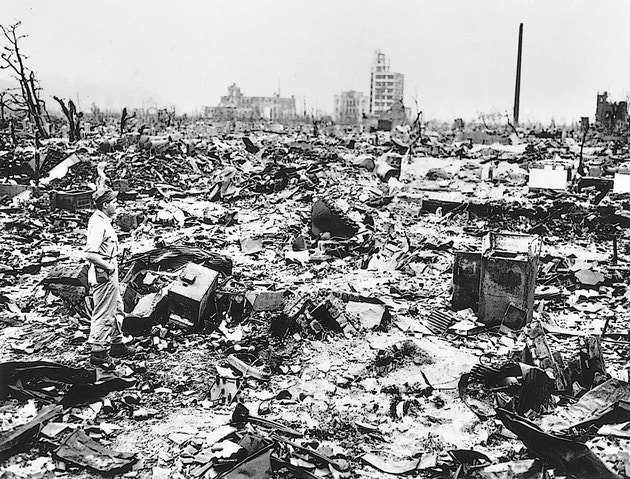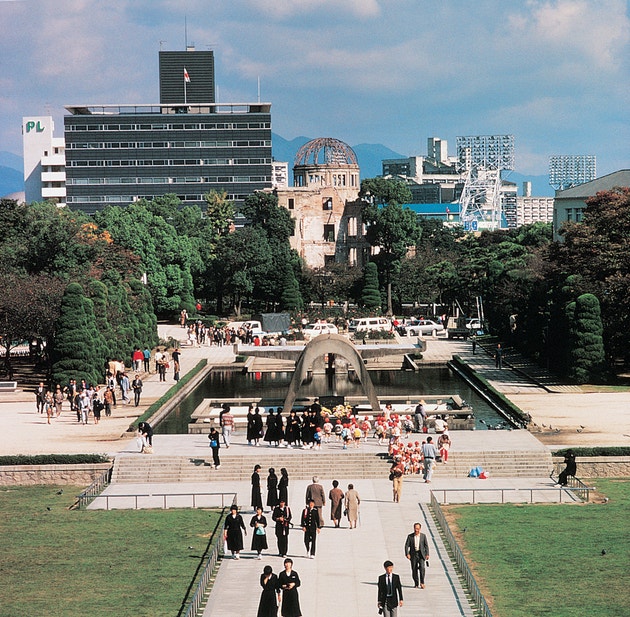Hiroshima
Today, Japanese and world leaders held a solemn ceremony to mark the 70th anniversary of the dropping of an atomic bomb on the Japanese city of Hiroshima. Tens of thousands of people stood for a minute of silence, broken only by the tolling of a single bell, at Hiroshima’s Peace Memorial Park, near the epicenter of the 1945 bombing. Japan’s Prime Minister, Shinzo Abe, and Hiroshima’s mayor, Kazumi Matusi, were joined by United States Ambassador to Japan Caroline Kennedy at the event.

An atomic blast demolished the center of Hiroshima, Japan, on Aug. 6, 1945. UPI/Corbis-Bettmann
On Aug. 6, 1945, a U.S. Army plane, the Enola Gay, dropped an atomic bomb on Hiroshima. Three days later, on August 9, another atomic bomb was dropped on Nagasaki. These were the first and last times that nuclear weapons were used in warfare. The United States dropped the bombs to convince Japan to surrender—and it worked. World War II (1939-1945) unofficially ended a few days later with Japan’s agreement to stop fighting on August 14. The official surrender came on September 2.
Much controversy has surrounded U.S. President Harry S. Truman’s decision to use the atomic bomb, but his decision came after years of bloody conflict and continued fighting, even after it was clear that Japan’s war was lost. Without the atomic bomb, the Allies almost certainly would have invaded the Japanese home islands, with heavy estimated casualties on both sides. There is some evidence, however, that Japan might have surrendered even had the bomb not been used.
There is no debate, however, on the atomic bombs’ destruction. In Hiroshima, the explosion killed from 70,000 to 140,000 people. The single bomb destroyed about 5 square miles (13 square kilometers) of the city. After Japanese leaders failed to respond to the bombing, the United States dropped another bomb on Nagasaki on August 9. It killed about 40,000 people. Later, thousands more died of injuries and radiation from the two bombings.
Of the more than one million hibakusha, as Japan calls those who survived the bombings, around 180,000 are still alive today. In 2011, Hiroshima’s Peace Memorial Museum began a project of pairing a survivor with a volunteer, called a denshosha, who memorizes the survivor’s story in great depth and detail. The average age of the remaining survivors is more than 80, and the hope is to allow someone to keep a memory and connection with people who lived through the unimaginable.

Hiroshima’s Peace Memorial Park in Japan honors the victims of the first atomic bomb used in war. The monument, center, marks the place where the bomb exploded on Aug. 6, 1945. The Atomic Bomb Dome (seen at the far end of the park), a building that was left unreconstructed after the war, has become a symbol of the peace movement. (c) Chuck Fishman, Woodfin Camp, Inc.
Other World Book articles:


